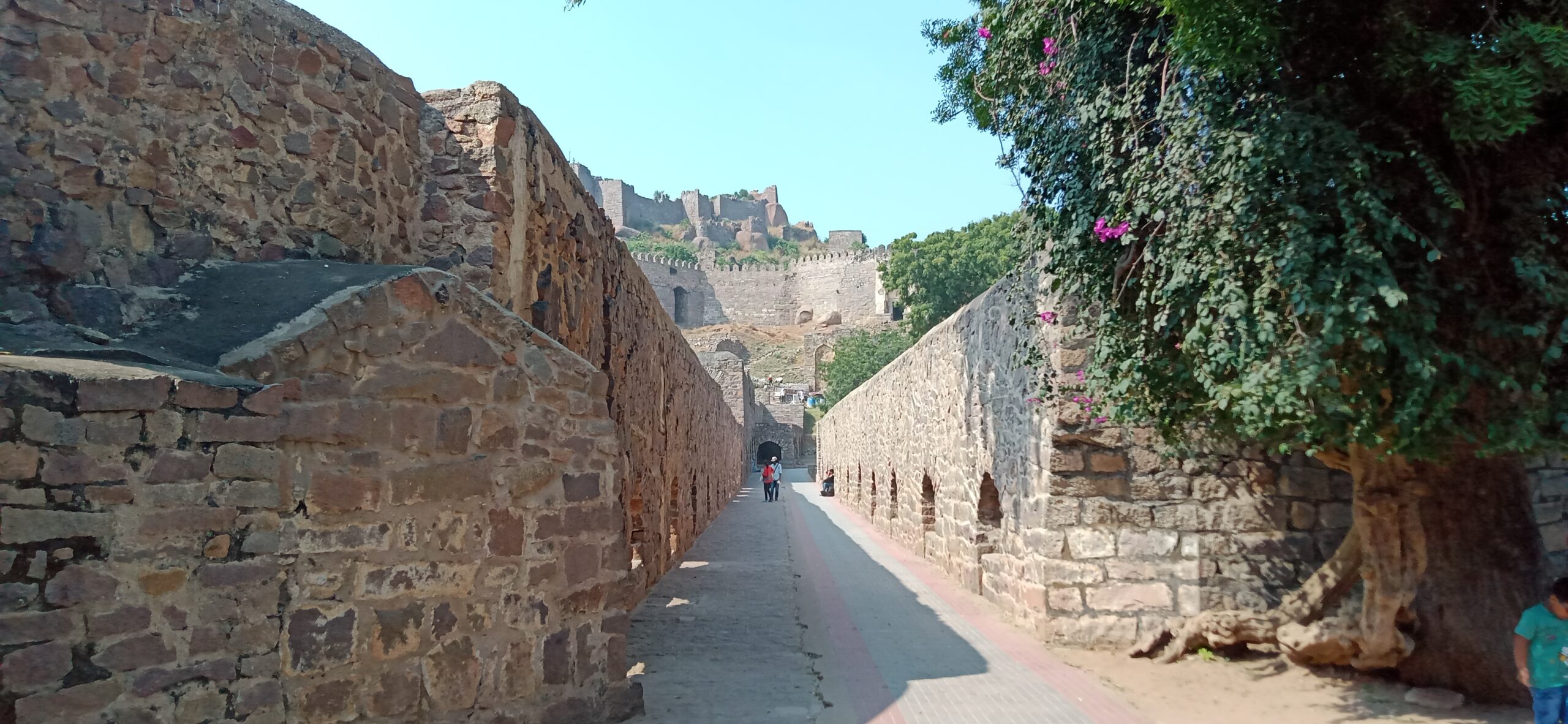All too often in English classrooms around the world, teachers tend to get caught up in meeting curricular demands and forget why they became teachers in the first place. The workshop in Hyderabad was a reminder to many that teaching, in the end, is not just a profession. Teachers become a students’ shinrinyoko.
A writer’s workshop might seem like a natural extension to a teacher certification program, but they are somewhat new in Indian academic circles. I believe teachers, irrespective of what they teach, need to know how to best use language to serve its ultimate purpose—communication. However, creative writing continues to be the orphan waiting at the door, and creative writing workshops are seldom on offer for in- or pre-service teachers as a means to enhance their teaching practices.
I wonder why we treat creative writing within academic circles so much like a weakness or a vice that needs to be hidden, downplayed or apologised for. In the years that I have used creative writing strategies to help learners write, many have shared with me that they feel a sense of accomplishment and a renewed connection with an intrinsic love for writing. Despite these reports and testimonies, many teachers still ignore its pivotal role. There seems to be a disregard for the role creative writing plays in helping learners to build a passion for writing, to manipulate language to navigate complex concepts, and eventually to achieve deep learning.
During my doctoral research, while I interviewed teachers to understand the role creativity plays in English language classrooms, several teachers lamented that their pre-service training did not focus on methods or approaches that nurtured creativity in writing. Their lack of training, coupled with their inability to teach writing as a skill, led them towards using format-based, formulaic approaches to teaching writing.
To understand what sorts of changes occur when practicing teachers are trained in creative writing methods, I began writing to Prof. Alan Maley (former Director-General of the Bell Educational Trust, Cambridge, England). Alan and I met at an ELT conference in Chennai, India in the fall of 2018. As ELT specialists, we both share a common interest in the power of creative writing as a resource for language learning and so began exchanging ideas over email to collaborate on a writing workshop for teachers in India. Following conversations and correspondence with Alan about using creative writing strategies in English classrooms, we organized a four-day creative writing workshop at the English and Foreign Languages University (EFL-U) Hyderabad, India, where I am currently a doctoral student in the school of English language education.

The workshop, which took place in December 2019, focused on creative writing strategies that could help teachers build language skills that are both instructional and engaging for their learners. In the pursuit of a reluctant muse, we wondered whether we could create a group of Indian teachers who might benefit from a workshop where the focus would be on using playful, informal, and expressive writing as a way to strengthen the skills of language and thinking.
We wondered whether there would be any takers at all for this kind of workshop, and when the first set of advertisements were released, the response was staggering!
The advertisement for the workshop asked potential participants to respond to a simple question in 100 words: Why would you like to attend a creative writing workshop? The workshop was open to practicing teachers who are current or former students, and faculty members of the EFLU community including campuses in Hyderabad, Lucknow and Shillong. Despite these criteria, several non-affiliated submissions came in, and the selection committee had to reject them. The participants’ teaching experiences ranged from 0-20 years. It was indeed a mixed-bag.
The responses ranged from wanting to learn new strategies to unexpected statements about how one wanted to improve his or her ability to write research papers. Example selected responses (all names are pseudonyms)* :
1. Margarita: Writing is both significant and tedious. It is the most difficult skill to be taught and learnt. It is more of an art which develops over time and practice. I wish to attend this workshop because of my interest in creative writing and developing materials to teach writing in the classroom. As a teacher I have several experiences where I struggled to find suitable materials for teaching writing. I am sure this workshop will be very informative and would also provide insight into how we can improve our own writing skill vis-a-vis help our learners too. (India)
2. Ahmed: I would like to attend the workshop for a few reasons. As a university teacher, I have to teach writing to the tertiary level students. I hope this workshop will offer me practical tips and effective strategies to teach writing creatively. In addition, since childhood I have been writing poems, stories, essays, and getting them published, infrequently though, in local Bangla and English dailies. I think this workshop will help me hone my own writing skills further (Bangladesh).
The selection criteria was simple: participants’ ability to write clearly and a clearly stated intention about how they would use what they learned at the workshop in their in-service teaching practices. Eventually, after wading through a sea of applications, we arrived at the final thirty for this workshop: an international group of participants including teachers from Syria, Yemen, Bangladesh, Nepal and Srilanka. This eclectic group was possible because the University as part of the International Council for Cultural Relations (ICCR) program, hosts scholars from several foreign countries.
With Alan and I as co-facilitators, the workshop was afoot. The workshop sections were small and divided into 4 groups of 8 participants. The small-group atmosphere allowed for individual attention and helped to foster a sense of belonging to a supportive learning community.
Since this was a first for many, the enthusiasm was palpable with several participants eager to share their written work, similar to the fervor in a real classroom where eager young learners want to share with peers and the teacher. Prior to the workshop, the teachers were used to instructing their students, but seldom participated actively as writers in their own writing classrooms. Teachers soon began to notice that interplay of language and journeying from a germ of an idea into a creative piece required flexibility, skill and expertise.

On the first day of the workshop, many participants struggled with the creative activities we presented, such as haikus, stem poems and mini-sagas. In fact, by the end of day one, we wondered if some teachers might drop out of the field trip planned to Golconda Fort in the old city the next day. Happily, everyone turned up for the writing trip. Not only did everyone trek up and down the 300 odd steps to the top of the fort, they also managed to produce wonderful new writing. This included a haibun – an alternation of short prose sections interspersed with haiku – a kind of word picture of the day.
A haibun is usually based on what writers observe, reflect on, and feel during a long walk – usually in the countryside. The writers alternate short passages of prose with haikus to convey the complex impressions the walk has on them. It is like a sandwich or layer cake, with the prose passages as the bread, and the haikus as the filling. One participant, Timothy Jayaraj, composed the following haibun:
Trip to Golconda
I was excited to visit the 700-year-old Golconda Fort particularly because it once housed several diamonds that now stud the crown jewels of other countries; most famously the Koh-i-Noor, now in the Tower of London. As is our wont in India, we began a half hour late. Most of us used the bus. The rest used a car. The din of the bus made me sleepy. My mind became a coarse sieve, in principle retaining nothing. But a few words got caught in the holes:
“The black Innova”;
“Sarees” and “motion sickness”
“MeToo!” “Not like that!”
En route to Golconda, the back of Prof. Maley’s head, looming over the white headrest, reminded me of polar bears. He spent the better part of the ride silently, looking out the left window, taking in the bustling city. The left half of it at least.
Do polar bears drift?
On personal sheets of ice
Dreading the sunset?
An hour passed. Most of my fellow writers squinted through barely-parted curtains, glimpsing the diurnal metropolitan chaos. I wonder how many eyes lingered for more than a glimpse, to follow just one of the many methods that make this madness a home for nine million people. Like the method of a biker as he overtakes our bus, his face half-turned to his pillion – an intricate scene overlaid with the din of the traffic. We trundled onto a narrow road, past a few trees, and then –
A Christian graveyard.
White stones? Saints. Black stones? Sinners.
The red ones? Turncoats.
–Timothy Jayaraj
Another creative writing activity that participants enjoyed were “stem poems,” where the lines of a poem begin with the same phrase and the writer adds different endings. We modified the stem prompt into a group activity, which allowed writers to interact and elaborate upon what sleep really means for them. The following example involved six participants working together to arrive at a single poem.
Sleep is an illusion
Sleep is a conjurer of fantasies
Sleep is an alternate reality
Sleep is to imagine never to be
Sleep is a sedative
Sleep is waking on the other side
Sleep is being awake in dreams
Sleep is seeing the unforeseeable
Sleep is believing there is a tomorrow
Sleep is ego in id.
–Prithviraj, Clementine, Manish, Kranti, Shravan, and Radhika
The remaining days of the workshop were spent polishing drafts, writing new pieces and discussing different ways to plant the newly-learned strategies into everyday instruction. Participants felt comfortable exploring new directions in their writing and thinking. They began to trust their own language and voice, learning to think for themselves while collaborating with others.
Two Japanese words best sum up the experience for everyone attending the writing workshop – shinrinyoko and natsukashii. Both terms have profound meanings.
Shinrinyoko literally translates to “forest bath”. In Japanese culture, a walk in the forest is believed to have restorative and therapeutic benefits. It is not a jog or a hike; no end result has to be achieved, no milestones to be met, no assessment instruments need be sharpened. It is simply a moment where you commune with nature, letting your body guide you to where it wants to go. Using the power of your senses, you let nature wash over you and restore in you what everyday living erodes. Shinrinyoko is the bridge that brings two worlds together. The workshop became the shinrinyoko for many participants. In writing, they made a journey: towards themselves and towards finding meaning in why they do what they do.
The experiences they garnered became their natsukashii. Natsukashii means “nostalgia”. It’s something that evokes a fond memory from your past. The workshop invoked powerful memories for participants. Memories about a time when a teacher spent just a moment longer to help tussle with a complicated construct; a time when a teacher’s kindness helped the student sail through a difficult time. There were so many moments when teachers became self-reflective and journeyed to a time where they decided to pay it forward as gurudakshina–acknowledgement of debt to their own teachers.
In February 2021, teachers who participated in the workshop saw their creative writing pieces published as a collection in a book titled Writing Something Interesting for a Change. For some of the teachers in this group, this was a momentous occasion as their artistic creations were now, for the very first time, in a collection alongside other writers. As Tharaa, a Syrian teacher said, “The book is real and striking. It changed my life. I happily and whole-heartedly owe these writings to you and the workshop. It helped me understand that I can write, which gave me a tremendous boost!”
All too often in English classrooms around the world, teachers tend to get caught up in meeting curricular demands and forget why they became teachers in the first place. The workshop in Hyderabad was a reminder to many that teaching, in the end, is not just a profession. Teachers become a students’ shinrinyoko.
For details about the workshop and to understand the strategies used during the workshop, do write to me here: sharoon.scholar@gmail.com
Sharoon Sunny earned an MA in Humanities with a “Studies in Literature” major from the University of Texas at Dallas, where she was the recipient of Robert Plant Armstrong Endowed Fellow. She is currently working towards a PhD in ESL from the School of English Language Education at the English and Foreign Languages University, Hyderabad, India. Sharoon has published several books and articles; her most recent being a book for children, titled Eek It’s an Insect, 2020. Her poems have featured in two of Alan Maley’s books: Viral Time Warp—Corona Writings from members of the Creativity group, 2020 and Writing Something Different for a Change, 2021. You can learn more about her community-based projects with children from impoverished backgrounds at her blog, where she frequently posts about early literacy and specific learning difficulties: https://abetterword.substack.com



